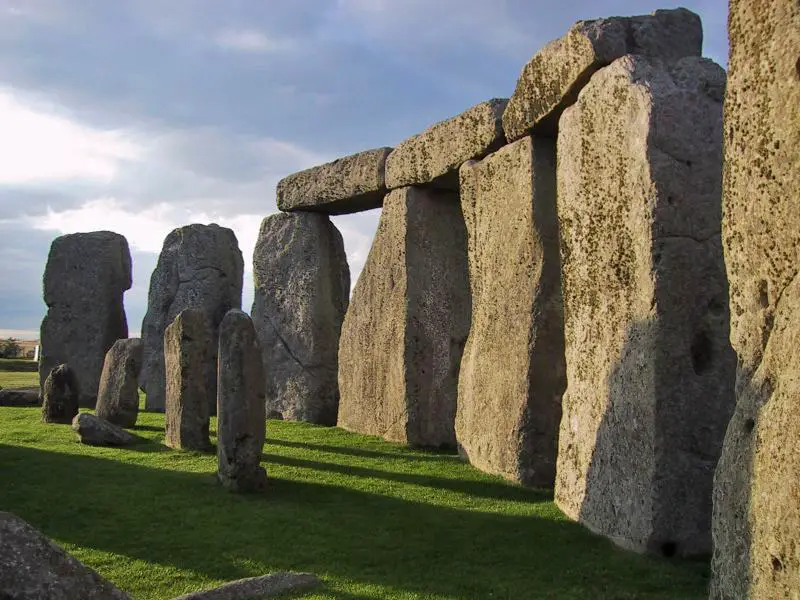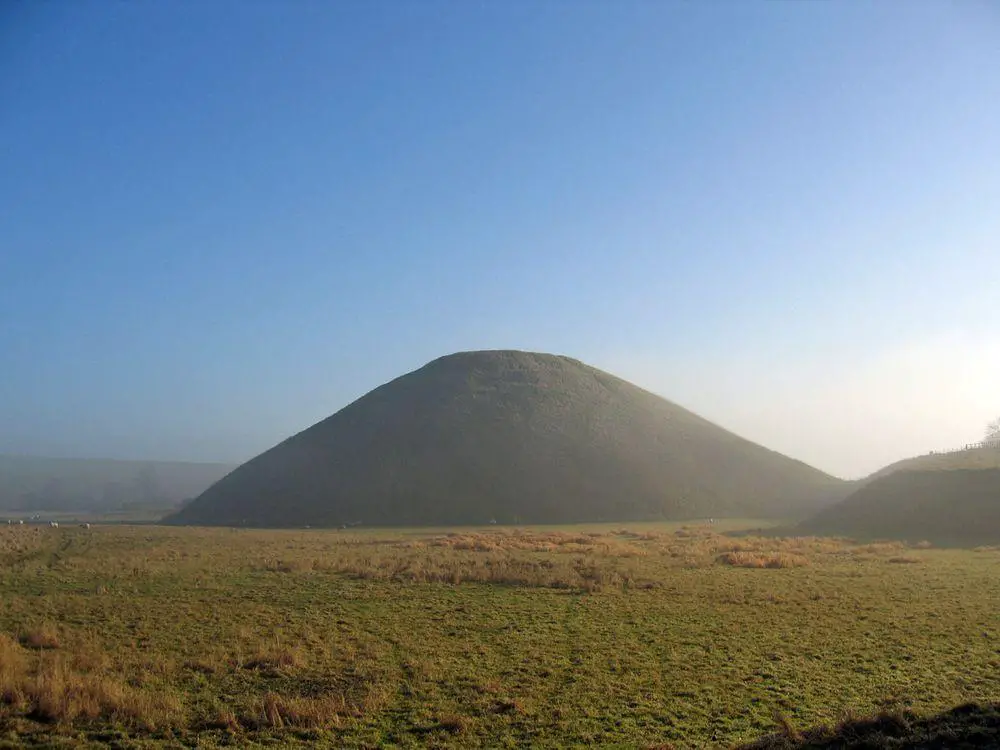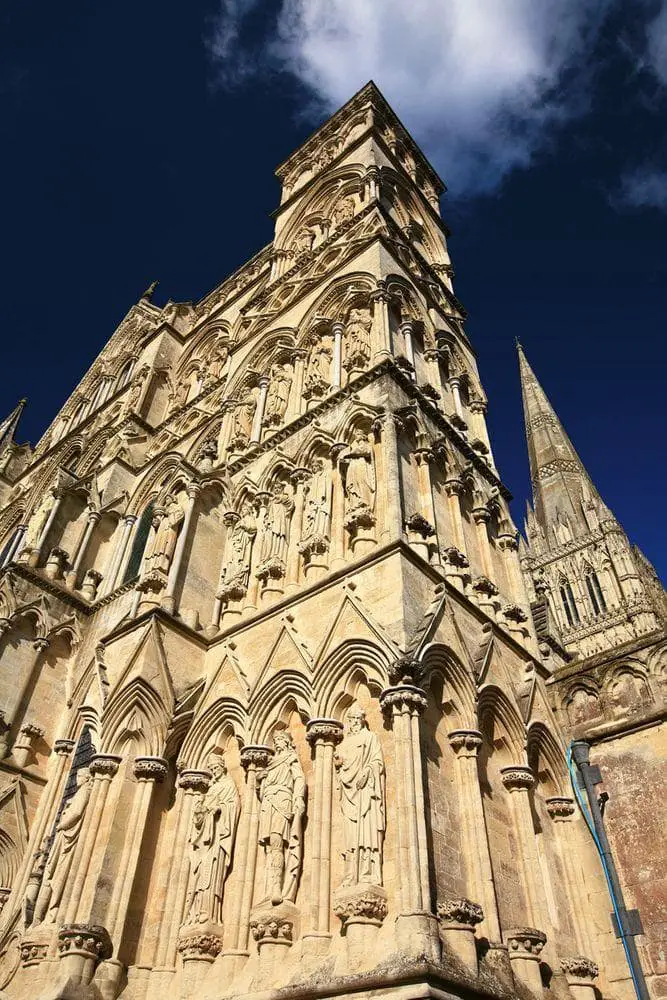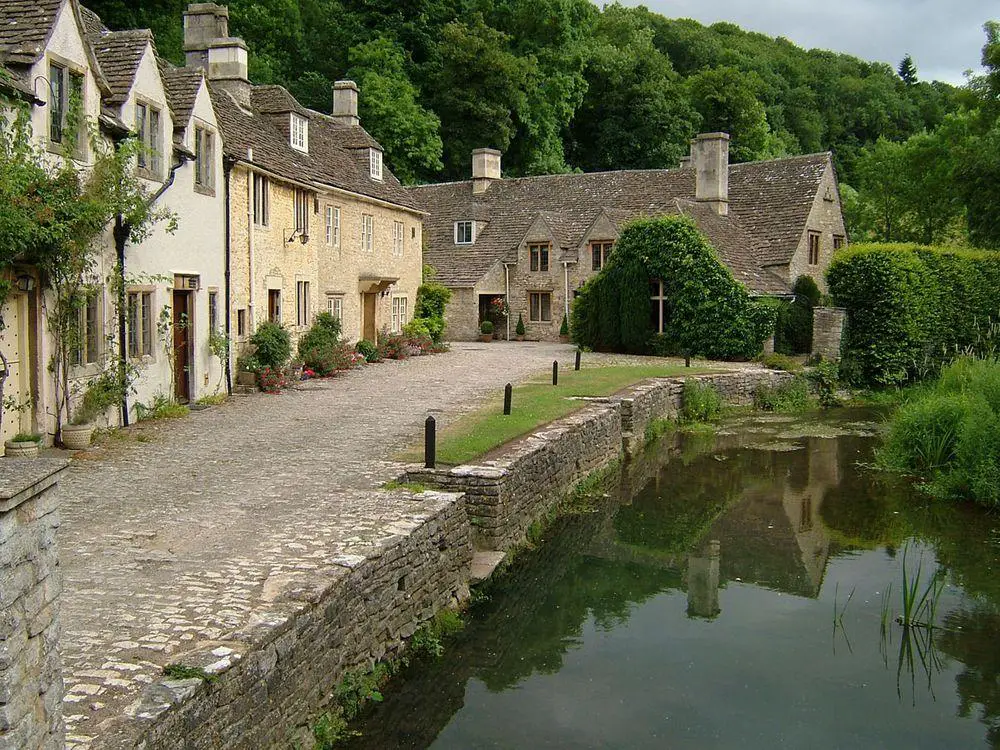Wondermondo 🢖 World 🢖 Wonders of Europe 🢖 Wonders of the United Kingdom 🢖 Wonders of England 🢖 Wonders of Wiltshire
Territory
Wonders of Wiltshire

 Highlights
Highlights
Wiltshire is known worldwide for its archaeological monuments, especially Stonehenge. This fame is deserved but there is much more than this. The most amazing wonders of Wiltshire are:
- Archaeological landscape – Wiltshire is home to the densest complex of Neolithic and Bronze Age monuments in Europe. Several of these monuments are unique in the world. New, exciting, and often enigmatic monuments still are found here.
- Churches – Salisbury Cathedral is an architectural monument of world importance, but in Wiltshire are located numerous other very old medieval churches.
- Country houses – the county is very rich with diverse interesting country houses built by once important and influential people. Several country houses have rich art collections.
Map with the described wonders
If you see this after your page is loaded completely, leafletJS files are missing.
 Top 25 wonders of Wiltshire
Top 25 wonders of Wiltshire
Archaeological wonders
Stonehenge
One of the most popular archaeological monuments in the world. It consists of a group of large standing stones in a circular setting, erected sometime around 2500 BC (?). Located in the middle of a dense complex of archaeological monuments.

West Kennet Long Barrow
Neolithic tomb, a megalithic monument. Chambered long barrow, the longest in Britain – roughly 100 m long. Built in 3600 BC and used until 2500 BC. Ghost stories.
Old Sarum
The earliest settlement of Salisbury, inhabited since 3000 BC. Nowadays there are massive earthworks of Iron Age hillfort (around 500 BC) and ruins of a royal castle from the 11th century.
Silbury Hill
Artificial, 37 m tall mound. The tallest prehistoric human-made mound in Europe. Built approximately at 2750 BC, the purpose is unclear.

Architecture wonders
Salisbury Cathedral
One of the most impressive representatives of Early English architecture (Early Gothic style), built in 1220 – 1258. The spire of the church is 123 m tall. Contains the oldest working clock in the world, from 1386. Contains many valuable works of art.

Lacock
Village with almost unspoiled appearance since the 18th century. Most of the buildings in the village were built in the 18th century or earlier. Village has an unusual plan with a large block of buildings in the center.
Longford Castle
Late medieval castle with triangular planning. It was constructed in the late 16th century over a former structure. Rebuilt in the early 19th century. Unusual, adorned facade.
The Old Bell Hotel and Restaurant
Possibly, the oldest existing hotel in England that exists since 1220. Luxurious interior with valuable details from the 13th century. Reportedly, haunted.
Stourhead Gardens
Early representative of English landscape gardens, developed in 1741 – 1780 around an artificial lake. Contains interesting examples of landscape architecture – The Pantheon, the Temple of Apollo, the bridge, and notably – the 49 m tall King Alfred’s Tower. Gardens contain a large collection of trees and shrubs from the whole world.

Bowood House
Large country house, first built around 1725 and extended in the 1750ies and 1770ies. Although a large part of this country house was demolished in the 1950ies, the remaining structure still represents an impressive sight. Contains a valuable collection of paintings. Beautiful gardens.
Lacock Abbey
This monastery was established in the early 13th century. Construction started in 1232. In 1539 converted to a house, the church was destroyed. Around 1550 was added Renaissance style tower. Beautiful Gothic cloister. In the 1750ies altered to a Neo-Gothic style. Here was taken the earliest known photographic negative in 1835 by William Talbot – it shows a window of the palace.
Castle Combe
Unique, well preserved medieval village with most houses from the 15th century (many – earlier). Contains numerous valuable features, such as an early clock, and a market cross.
Box Tunnel
Early railway tunnel, built in 1836 – 1841 after the design of Isambard Kingdom Brunel. This 2,937 m long tunnel is a high achievement of engineering.
Cherhill White Horse
This hill figure was made in 1780. Originally the figure was 50 by 67 m large. There were 13 such horse figures in Wiltshire, now eight are seen.
Cricklade St Sampson’s church
Medieval church, built on the remains of Saxon church from 890 AD. The main part was built between 1240 – 1280. Beautiful bell tower with four spires.
Wilton House
Impressive and beautiful country house built in the middle 16th – middle 17th century. The architecture of the building represents Mannerist – early Neo-Classicism style.
Corsham Court
Manor house in the site where important manor houses have existed since Saxon times. The current building is from 1582, redesigned and rebuilt in 1761 – 1764 and in 1796, in 1844 – 1849. Contains important art collections.
Stourhead mansion
An important example of early English Palladian style in architecture. This manor house was built in 1720 – 1724. Contains a rich library and art collection.
Westbury White Horse
A large hill figure of a horse, made in the middle of the 18th century. It was restored in 2006.
The historical center of Salisbury
Medieval market city, established in 1220, moving over from the nearby ancient Old Sarum. The historical center of Salisbury is centered around Salisbury Cathedral and contains numerous historical buildings, including parts of the medieval city wall with gates. Markets are held here since 1227.
Wardour Old Castle Ruins
Ruins of an impressive, large castle, built in the 14th century. The castle is unique due to its hexagonal planning. Partly blown up in 1644.
Great Chalfield Manor
Late medieval manor house with a moat. Built in 1465 – 1480, rebuilt in the 19th and 20th centuries. Beautiful garden.
Trafalgar House
A large country house that is associated with the family of Admiral Lord Nelson.
Inglesham St John the Baptist Church
Well preserved medieval church that was built using the remains of the earlier Anglo-Saxon church. Constructed sometime around 1205 and largely unchanged since then. Contains Anglo-Saxon art, and medieval paintings in up to 7 layers.
King Alfred’s Tower
Unusual monument – 49 m tall tower of red brick, resembling a medieval fortification. Constructed in 1772 to commemorate Alfred The Great who defeated the Danish army in 878.
 Recommended books
Recommended books
50 Walks in Wiltshire
Walking is one of Britain’s favorite leisure activities, and this guide features a variety of mapped walks to suit all abilities. Featured are all of the practical detail you need, accompanied by fascinating background reading on the history and wildlife of Wiltshire, and clear mapping for ease of use. Every route has been color-coded according to difficulty, and walks are annotated with local points of interest and places to stop for refreshments.
Prehistoric Wiltshire: An Illustrated Guide
Wiltshire contains some of the most important archaeological sites in Britain. Its prehistoric remains include the breathtaking Stonehenge, awesome stone circle at Avebury, the enigma of Silbury Hill, and a large number of hillforts. Among these important sites are also found smaller, perhaps lesser-known monuments of the Stone, Bronze, and Iron Ages, including the King Barrow cemetery and Woodhenge. Bob Clarke, the author of numerous books on military archaeology and history, takes us on a tour of the prehistoric sites in this archaeologically rich county, using aerial photography and outstanding images, which accompany the informative text.



